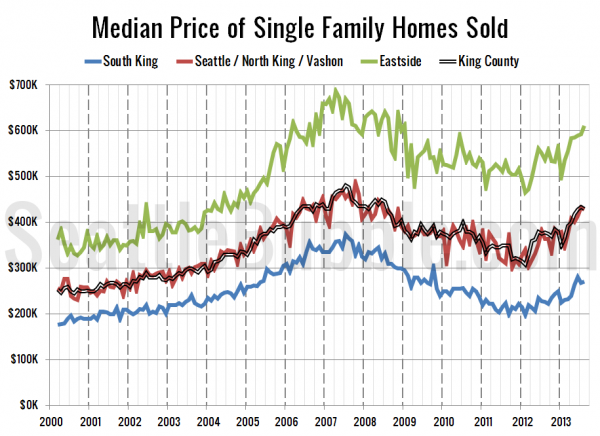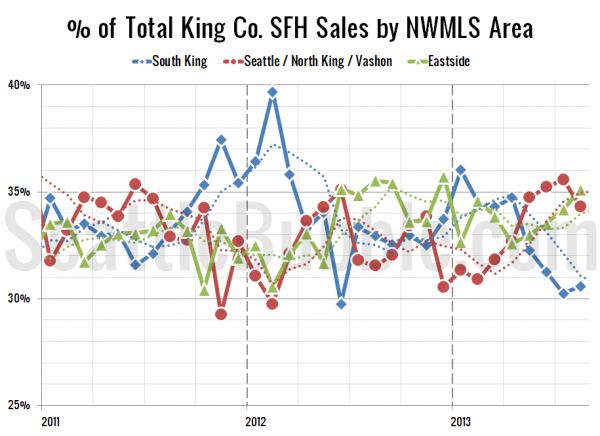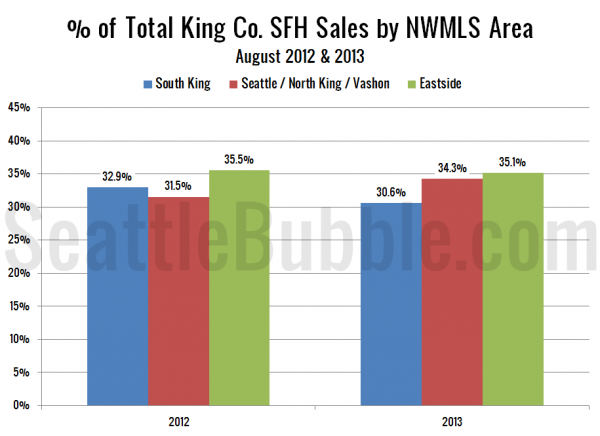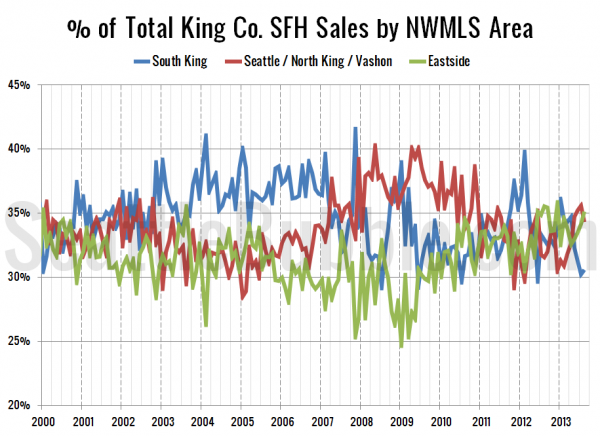It’s time once again to take an updated look at how King County’s sales are shifting between the different regions around the county, since geographic shifts can and do affect the median price.
In order to explore this concept, we break King County down into three regions, based on the NWMLS-defined “areas”:
- low end: South County (areas 100-130 & 300-360)
- mid range: Seattle / North County (areas 140, 380-390, & 700-800)
- high end: Eastside (areas 500-600)
Here’s where each region’s median prices came in as of August data:
- low end: $243,000-$391,503
- mid range: $360,000-$673,600
- high end: $498,500-$1,265,000
First up, let’s have a look at each region’s (approximate) median price (actually the median of the medians for each area within the region).
The median price in the mid range regions fell between July and August, losing 0.9% month-over-month, but was still up 17.8% year-over-year. The low tier was up 1.3% MOM and 19.6% YOY, while expensive homes on the eastside gained the most month-over-month, up 3.3% between July and August. The high tier was up 13.9% YOY.
Next up, the percentage of each month’s closed sales that took place in each of the three regions. The dotted line is a four-month rolling average.
The share of sales that are taking place in the most expensive parts of the county has been surging over the last four months, rising from 32.6% in April to 35.1% in August. Over the same period, the share of sales in the low end regions has fallen from 34.7% to 30.6%.
As of August 2013, 30.6% of sales were in the low end regions, 34.3% in the mid range, and 35.1% in the high end. A year ago the low end regions had more of the share and the mid range less: In August 2012 the low end made up 32.9% of the sales, the mid range was 31.5%, and the high end was 35.5%.
Here’s that information in a visual format:
Finally, here’s an updated look at the percentage of sales data all the way back through 2000:
Since January 2000, the high tier has only accounted for the largest share of sales as it did in August in 22 of 176 months (12.5% of the time).




